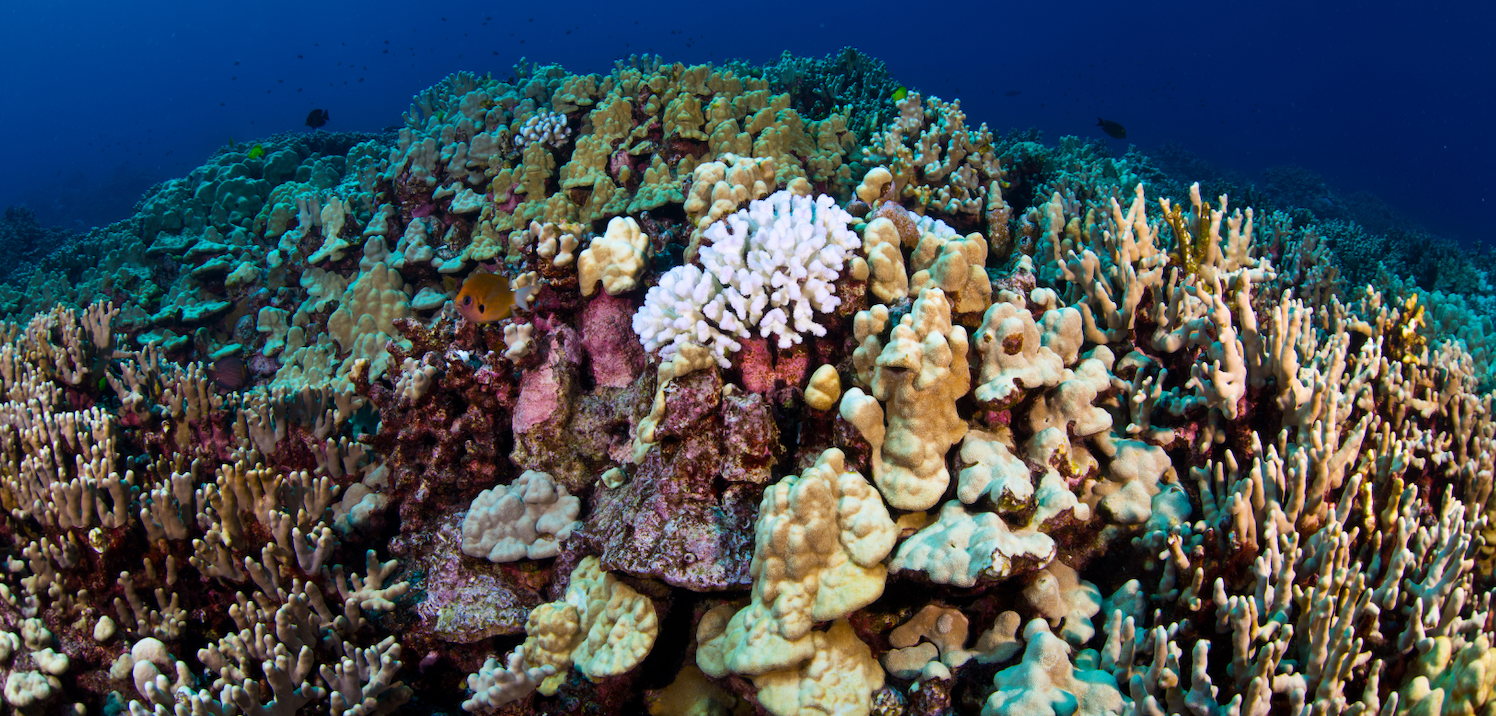Reviewed by Alex SmithMay 3 2022
As the world’s ocean temperatures rise, the number of cases of coral bleaching also increases. Corals become more susceptible to other stressors, such as water pollution, when they bleach.
 Example of coral bleaching in Hawaii. Image Credit: Arizona State University.
Example of coral bleaching in Hawaii. Image Credit: Arizona State University.
Many reefs, on the other hand, have corals that have survived despite the warming oceans.
Unraveling the complicated issue of coral bleaching and its influence on their survival or death could be crucial to preserving coral reef ecosystems, which provide food, jobs, recreation and coastal protection to roughly half a billion people around the world.
For the first time, researchers have mapped the location of living corals before and after a major marine heatwave. Corals are surviving despite increasing ocean temperatures due to climate change, according to the new research. Coastal development and water pollution also have a negative impact on coral reefs.
The study was published on May 2nd, 2022, in the Proceedings of the National Academy of Sciences USA. Researchers from Arizona State University, along with the Julie Ann Wrigley Global Futures Laboratory, reveal that various corals and environments influence the likelihood of their survival when ocean temperatures increase. The results also reveal that enhanced remote sensing technologies offer unprecedented opportunities to scale-up reef monitoring.
From its home in the Hawaiian Islands, ASU scientists with the Center for Global Discovery and Conservation Science took to the skies on the Global Airborne Observatory (GAO). The aircraft is fitted with highly developed spectrometers that can map ecosystems on land and beneath the ocean’s surface. Investigators can use these maps to track changes in coastal ecosystems over time.
Repeat coral mapping with the GAO revealed how Hawaii’s coral reefs responded to the 2019 mass bleaching event. We discovered coral ‘winners’ and ‘losers.’ And these winning corals are associated with cleaner water and less coastal development despite elevated water temperatures.
Greg Asner, Study Lead Author and Director, Center for Global Discovery and Conservation Science, Arizona State University
Before a mass bleaching event hit the Hawaiian Islands in 2019, the GAO mapped live coral cover across eight islands. The scientists used this information to identify more than 10 potential coral refugia — habitats that could provide a safe haven for corals threatened by climate change.
Despite similar heat stress, there was approximately 40% less coral mortality among the potential refugia than on neighboring reefs.
Reefs next to heavily developed coasts are also more vulnerable to mortality during heatwaves, according to the findings. When land development occurs, the amount of pollution entering the reef ecosystem rises, producing an unfavorable environment for coral reefs that are already struggling to survive in the face of warming water.
This study supports Hawaii’s Holomua: Marine 30 × 30 initiative by not only identifying areas impacted by ocean heatwaves, but also areas of refugia. These findings can be incorporated into management plans to aid in building a resilient network of reef regions and sustaining Hawaii’s reefs and the communities that depend on them into the future.
Brian Neilson, Study Co-Author and Head, Division of Aquatic Resources, Hawaii
The Holomua: Marine 30 × 30 initiative focuses on creating marine management areas spanning 30% of Hawaii’s nearshore waters. Hawaii’s coral reefs are an important part of the culture and economy of the islands. Understanding which corals are surviving is vital in achieving effective and targeted conservation.
Previous approaches have failed to deliver actionable interventions that might improve coral survival during heatwaves or to locate places of heatwave resistance, known as coral refugia, for rapid protection. Our findings highlight the new role that coral mortality and survival monitoring can play for targeted conservation that protects more corals in our changing climate.
Greg Asner, Study Lead Author and Director, Center for Global Discovery and Conservation Science, Arizona State University
Asner is also the director of the Global Airborne Observatory.
The Hawaii Division of Aquatic Resources and the National Oceanic and Atmospheric Administration’s Pacific Islands Fisheries Science Center collaborated on this study along with ASU’s Center for Global Discovery and Conservation Science. This research was funded by the Pew Charitable Trusts’ Lenfest Ocean Program.
Journal Reference:
Asner, G. P., et al. (2022) Mapped coral mortality and refugia in an archipelago-scale marine heat wave. Proceedings of the National Academy of Sciences USA. doi.org/10.1073/pnas.2123331119.